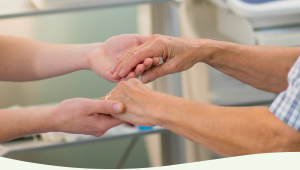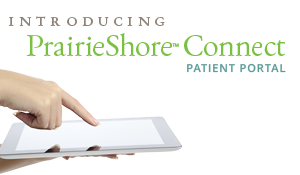Joint Pain
You and your joints
A joint is the connection between two bones. Joints and their surrounding structures allow you to bend your elbows and knees, bend your back, and turn your head.
Smooth tissue called cartilage and synovium and a lubricant called synovial fluid cushion the joints so bones do not rub together. But things like injury, poor posture, lifting heavy objects, and just getting older can cause wear and tear your cartilage. This can damage your joints and lead to arthritis.
Diagnosis and treatment
Joint pain can range from mildly irritating to debilitating. It may go away after a few weeks (acute), or last for several weeks or months (chronic). Even short-term pain and swelling in the joints can affect your quality of life. Whatever the cause of joint pain, you can usually manage it with medication, physical therapy, or alternative treatments.
Your doctor will first try to diagnose and treat the condition that is causing your joint pain. The goal is to reduce pain and inflammation, and preserve joint function. Treatment options include:
Medications
For moderate-to-severe joint pain with swelling, an over-the-counter or prescription nonsteroidal anti-inflammatory drug (NSAID) such as aspirin, ibuprofen (Advil, Motrin), or naproxen sodium (Aleve), can provide relief. A newer generation of NSAIDs known as Cox-2 inhibitors (celcoxib) is also good for pain relief, but all except one of these drugs (Celebrex) have been removed from the market because of an increased risk of heart attack, stroke, and other cardiovascular events. NSAIDs also can have side effects, potentially increasing your risk for gastrointestinal bleeding.
If you have milder pain without any swelling, acetaminophen (Tylenol) can be effective. Be careful when taking this medicine though, especially if you drink alcohol, because high doses may cause liver damage. Because of the risks, you should take any of these pain medications with caution.
If your pain is so severe that NSAIDs and Cox-2 medicines aren’t effective enough, your doctor may prescribe a stronger opioid medication.
Other drugs that may help relieve pain include:
- Muscle relaxants to treat muscle spasms (may be used together with NSAIDs to increase the effect)
- Some antidepressants and antiepileptic drugs (which both interfere with pain signals)
- Opiate medications
Topical agents
Capsaicin — a substance found in chili peppers — may relieve joint pain from arthritis and other conditions. Capsaicin blocks substance P, which helps transmit pain signals, and it triggers the release of chemicals in the body called endorphins, which block pain. Side effects of capsaicin cream include burning or stinging in the area where it is applied. Another topical option is an arthritis cream containing the ingredient, methyl salicylate (Ben Gay).
Injections
For people who don’t find joint pain relief from oral or topical medications, the doctor can inject a steroid medication (which may be combined with a local anesthetic) directly into the joint every three months to four months. Steroid injections are most commonly used in patients with arthritis, joint disease, or tendinitis. The procedure is effective, but in most situations the effect be temporary. It can also have side effects; if steroid injections mask an injury, you could overuse the joint and damage it even further.
Other injection options include:
- Removing fluid from the joint (often done in connection with a steroid injection)
- Injections of hyaluronan, a synthetic version of the natural joint fluid. This is used to treat osteoarthritis
Physical therapy
You can work with a physical therapist to strengthen the muscles around the joint, stabilize the joint, and improve your range of motion. The therapist will use techniques such as ultrasound, heat or cold therapy, electrical nerve stimulation, and manipulation.
If you are overweight, losing weight can relieve some of the pressure on your painful joints. Exercise is one effective way to lose weight (along with diet), but be careful to stick with low-impact exercises that won’t further irritate the joint. Swimming and bicycling are among the best exercises because both allow you to exercise your joints without putting impact on them. Because water is buoyant, swimming also relieves some of the pressure on your joints.
Home treatment
You can relieve short-term joint pain with a few simple techniques at home. One method is known by the acronym, PRICE:
- Protect the joint with a brace or wrap.
- Rest the joint, avoiding any activities that cause you pain.
- Ice the joint for about 15 minutes, several times each day.
- Compress the joint using an elastic wrap.
- Elevate the joint above the level of your heart.
Applying ice to your painful joints can relieve the pain and inflammation. For muscle spasms around joints, try using a heating pad or wrap several times a day. Your doctor may recommend that you tape or splint the joint to minimize movement or reduce pain, but avoid keeping the joint still for too long because it can eventually become stiff and lose function.
No matter what treatment your doctor recommends, get medical help right away if the pain gets intense, your joint suddenly becomes inflamed or deformed, or you can no longer use the joint at all.
Alternative treatments
Some research has indicated that glucosamine and chondroitin supplements can help with joint pain and improve function. Both of these substances are components of normal cartilage, which helps cushion the bones and protect joints. Glucosamine and chondroitin supplements are available over-the-counter in capsule, tablet, powder, or liquid form. Although these supplements don’t work for everyone, they are safe to try because they don’t have any significant side effects.
Tips for keeping your joints healthy
The best way to care for your joints is to keep them and your muscles, ligaments, and bones strong and stable. Here are some tips for good joint health.
Watch your weight
Keeping your weight within a healthy range is the best thing you can do for your joints. Weight-bearing joints, such as your knees, hips and back, have to support some, if not all, of your body weight. That’s why so many overweight people have problems with these areas of the body.
The more you weigh, the more wear and tear you put on your joints. Losing weight reduces pressure on your knees, hips, and back and helps prevent joint injury. Research has shown that with every pound gained, a person puts four times more stress on the knees.
Exercise more, sit less
Exercise can help you lose extra pounds and maintain a healthy weight. Some research suggests that aerobic exercise — activities that get your heart rate up — can reduce joint swelling. If your joints bother you, opt for exercises that won’t give your joints a pounding. Try low-impact exercises such as swimming or bicycling.
Another good tip for healthy joints is to move more throughout your day. Don’t sit still! Couch potatoes, computer addicts, and all who remain glued to a chair all day long have a high risk for joint pain. Less movement means more stiffness in your joints. So get up and get moving. Change positions frequently. Take frequent breaks at work, and stretch or go for a short walk. If you can’t leave the office, try taking phone calls while standing.
Build strong muscles
Strong muscles support your joints. If you don’t have enough muscle, your joints take a pounding, especially your spine, hips, and knees, which must support your entire body weight. Weight training exercises help build muscle and keep your muscles and surrounding ligaments strong. That way, your joints don’t have to do all the work.
A certified personal trainer can show you the best exercises for healthy joints and how to do them correctly. Doing them incorrectly increases the chance of injury.
Strengthen your core
Make sure your exercise routine includes activities that strengthen your core. That includes your chest, back, and abdomen. Stronger abs and back muscles help you keep your balance and prevent falls that can damage your joints.
Know your limits
Certain exercises and activities might just be too tough for your joints to handle at first. Go slow. Modify exercises that cause joint pain. Ask a trainer, physical therapist, or coach to help you with modifications. You will likely feel some muscle pain after working out for a few days, especially the second and third day. Listen to your body, and learn the difference between “threatening pain” and good, muscle-building pain.
Improve your posture
Slouching is not good for your joints. Standing and sitting up straight protect your joints from your neck to your knees. Good posture also helps guard your hip joints and back muscles.
Posture is also important when lifting and carrying. For example, if you use a backpack, be sure to put it over both shoulders instead of slinging it over one. Being lopsided puts more stress on your joints. When lifting, use the biggest muscles in your body by bending at your knees instead of bending your back.
Protect your body
Always wear a helmet, knee pads, and elbow and wrist pads when taking part in high-risk activities, including work-related ones such as repetitive kneeling or squatting. Elbow and wrist braces, or guards, also help reduce stress on your joints during activities. Even if you think you’re a pro on a bicycle or on a pair of Rollerblades, you should never go without safety gear. Hit the wrong bump in the road, and you could be headed for a lifetime of trouble. Serious injuries or several minor injuries can damage cartilage. Injuries can lead to long-term joint problems.
Ice sore joints
Ice is a great drug-free pain reliever. It helps relieve joint swelling and numbs pain. If you have a sore joint, apply ice wrapped in a towel or a cold pack to the painful area for no more than 20 minutes. Don’t have ice or a cold pack? Try wrapping a bag of frozen vegetables in a light towel. Never apply ice directly to the skin.
Eat a healthy diet
Eating a healthy diet is good for your joints, because it helps build strong bones and muscles.
For your bones, make sure you get enough calcium every day. You can do this by eating foods such as milk, yogurt, broccoli, kale, figs, and fortified foods like soy or almond milk. If those foods don’t tempt your taste buds, ask your doctor if calcium supplements are right for you.
For your muscles, you need to get enough protein. Exactly how much you need depends on your age, sex, and how active you are. Most Americans get enough protein. Good sources include lean meats, seafood, beans, legumes, soy products, and nuts. Go for a variety.
You also need vitamin D to keep your bones and joints in good health. Vitamin D helps your body absorb calcium from the foods you eat. Dairy products, many cereals, soy milk, and almond milk are fortified with vitamin D. You can ask your doctor about the proper amount of vitamin D and ways you can get it.
Oranges may also give your joints a healthy boost. Some studies suggest that vitamin C and other antioxidants can help keep your joints healthy.
At PrairieShore™ Pain Center, our goal is to relieve your pain and improve your quality of life. If your primary physician has advised you to see a specialist for your pain, turn to us for help. To schedule your appointment, please contact us here or give us a call at (847) 883-0077.







